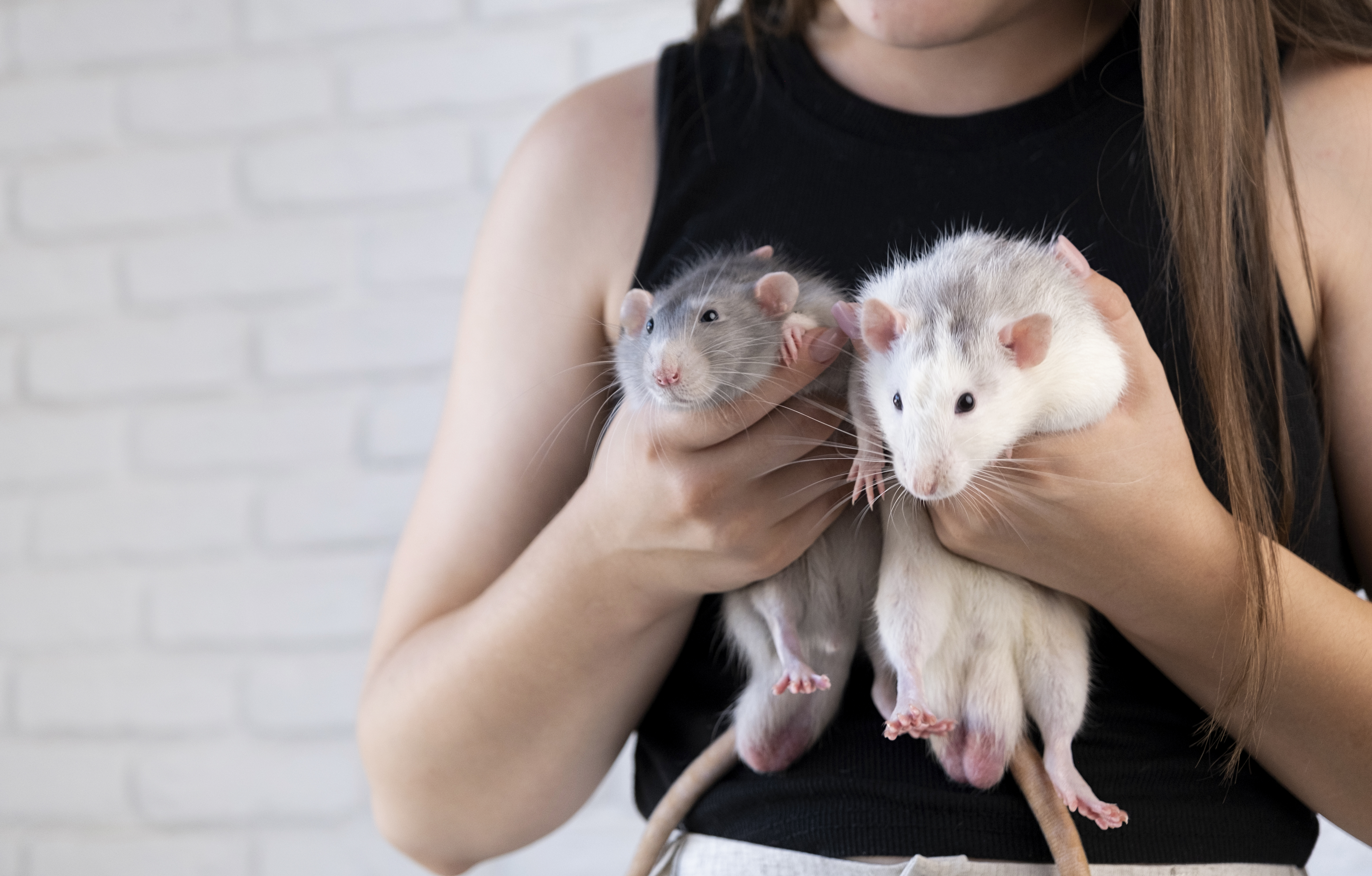What Foods Are Poisonous To Cats And Dogs?
Understanding which foods are healthy, and which are toxic for pets is essential for their health.
Many of the foods that are delicious and nutritious for humans to eat are dangerous, and even deadly, for our four-legged friends. Dogs and cats have very different digestive and physiological constitutions than humans. To keep their pets healthy, pet owners need to familiarize themselves with the many foods and ingredients that are toxic to them. Responsible pet ownership starts with understanding what foods your furry companion can enjoy—and what foods you must keep out of their reach. The following list, though not comprehensive, explains the top human foods that present the greatest risk for your pets and why you should keep them out of the paws, and jaws, of your furry friend.
Grapes And Raisins

Scientists are not entirely sure what exactly the chemical compound is in grapes and raisins that makes dogs and cats sick when they consume them, but some toxin in the fruit, and foods made from the fruit, can cause rapid kidney failure in both cats and dogs. Animals who display symptoms such as vomiting, diarrhea, and lethargy within twelve hours after consuming grapes or raisins should be treated by an emergency veterinarian as soon as possible to start dialysis and remove the dangerous toxins from the bloodstream. Failure to do so will likely lead to more profound symptoms within three to four days. The most noticeable of these aggravated symptoms include urinary complications, decreased appetite, and dehydration. If left untreated, or if allowed to progress too far, kidney failure will result in the death of your pet, so it is essential to act quickly if you think they have consumed either of these fruits.
Uncover more foods that are poisonous to dogs and cats now.
Alliums

Onions, garlic, shallots, scallions, chives, and any other plants from the allium family contain toxins that can seriously harm dogs and cats. The worst of these is garlic, which contains up to five times the amount of the toxin as onions and green alliums, but they are all very dangerous. Cats are especially susceptible to these compounds, though dogs are also at risk—particularly Japanese breeds such as Akitas, Shiba Inus, Hokkaido, and Kishu. The medical complications caused by allium plants are wide-ranging and include anemia and other blood disorders, damage to red blood cells, and profound gastroenteritis leading to severe intestinal damage. One of the more insidious aspects of allium poisoning is that the symptoms will not manifest until several days after the food is ingested. These will include a lack of energy, weakness, and urine that ranges in color from orange to deep red. The process of diagnosing allium toxicity includes blood work to confirm the presence of clumps known as Heinz-Ehrlich inclusions attached to the red blood cells.
Read more about foods considered poisonous to cats and dogs now.
Macadamia Nuts

Eating just five macadamia nuts, or eating products made with them, can make your dog or cat extremely sick. It does not make a difference if the nuts are raw, roasted, or if they are cooked into cakes or other baked goods. Nobody knows exactly the source of the toxicity, but macadamia nuts can lead to aggressive vomiting, depression, tremors, hyperthermia (elevated temperature), paralysis, ataxia (loss of coordination), increased rate of breathing and heart rate, and fatigue (particularly in the rear legs) in both dogs and cats. Symptoms will typically appear in less than a day and will last up to two days. When treated promptly with gastric decontamination, fluid therapy, and medication, most animals will quickly recover; without treatment, though, the toxin can prove fatal. In addition, because all nuts are very high in fats, some dogs and cats who eat them can develop acute pancreatitis, or inflammation of the pancreas, which can lead to additional and potentially fatal complications. Other nuts to keep away from your pets include walnuts, which are particularly harmful to cats.
Get more information on the foods considered quite poisonous to dogs and cats now.
Chocolate

This is probably the most famous toxic food for dogs, but it is also quite harmful to cats. For both, the specific culprit is the methylxanthine stimulant known as theobromine, which is found at particularly high levels in dark and unsweetened baking chocolate. Ingesting theobromine will induce vomiting and diarrhea in dogs and cats and will lead to additional complications such as heart damage, high body temperature, tremors, seizures, and eventually death. Most cats will actively avoid sweet foods unless they are prompted by their owner to eat them; dogs, however, who are much more food-motivated, will likely eat them without any coaching. Because of the severity of poisoning, it is important to seek emergency veterinary care for your pet right away if they consume anything with chocolate in it. To treat your pet, the veterinarian will adopt a course of fluids, stomach pumping, and the administration of intravenous medications, including apomorphine to induce vomiting and activated charcoal to remove the toxins from your pet’s bloodstream.
Learn more about the foods considered toxic to cats and dogs now.
Cherries

While the flesh of the cherry is safe for dogs to eat and contains beneficial nutrients such as vitamin A, vitamin C, fiber, and antioxidants, there are also enough risks in cherries that make it important for you to keep them away from your pet. On the mild side, like most fruits, the flesh contains a high level of sugars, which could irritate your dog’s stomach. More dangerous is the pit, which might break a tooth and could create an intestinal obstruction that might lead to ruptures to the digestive tract, infection, or internal bleeding. Symptoms of an obstruction include vomiting, constipation, and decreased appetite. The pit of the cherry, as well as the stem and leaves, also contain the toxin cyanogenic glycoside—better known as cyanide—which is dangerous for animals to ingest. If your dog eats only one cherry, they should be okay, but if more than one is eaten, be on the lookout for up to twenty-four hours for the symptoms of cyanide poisoning: difficulty breathing, reddening gums, and dilated pupils.







